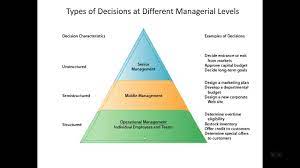The Moral Decision Making Model
When faced with difficult decisions, especially those involving ethical dilemmas, having a structured approach can help guide individuals in making choices that align with their moral values. The moral decision making model provides a framework for evaluating ethical situations and determining the most appropriate course of action.
Steps of the Moral Decision Making Model:
- Identify the Issue: The first step is to clearly define the ethical issue at hand. What are the conflicting values or principles involved?
- Gather Information: Next, gather all relevant facts and information related to the situation. Consider how different stakeholders may be affected by potential decisions.
- Consider Values: Reflect on your own moral values and principles, as well as any relevant ethical guidelines or codes of conduct that may apply.
- Explore Options: Generate a list of possible courses of action. Consider the potential consequences of each option and how they align with your values.
- Make a Decision: Based on your analysis, choose the option that best upholds your moral values and principles. Consider seeking advice from trusted mentors or colleagues if needed.
- Act and Reflect: Implement your decision and observe the outcomes. Reflect on the process and consider what you have learned for future ethical dilemmas.
The moral decision making model serves as a valuable tool for individuals seeking to navigate complex ethical situations with integrity and clarity. By following a structured approach, individuals can make decisions that are not only morally sound but also align with their personal values and beliefs.
Understanding Moral Decision Making Models: Key Questions Answered
- What is a moral decision making model?
- Why is a moral decision making model important?
- How can a moral decision making model help in ethical dilemmas?
- What are the key steps in a moral decision making model?
- Are there different types of moral decision making models?
What is a moral decision making model?
A moral decision making model is a structured framework that individuals can use to navigate ethical dilemmas and make decisions that align with their moral values. This model provides a step-by-step process for evaluating complex situations, identifying conflicting values, gathering relevant information, considering ethical guidelines, exploring various options, and ultimately choosing the course of action that best upholds one’s principles. By following a moral decision making model, individuals can approach ethical challenges with clarity and integrity, ensuring that their choices reflect their personal beliefs and values.
Why is a moral decision making model important?
Understanding why a moral decision making model is important is crucial for individuals navigating ethical dilemmas. A structured framework provides a systematic approach to evaluating complex situations, helping individuals clarify their values, consider various perspectives, and weigh the consequences of their choices. By following a moral decision making model, individuals can make informed decisions that align with their ethical principles and promote integrity in their actions. This process not only fosters personal growth and self-awareness but also contributes to building trust and credibility in relationships and professional settings. Ultimately, a moral decision making model serves as a guide for individuals to uphold their values and make choices that reflect their moral compass in a consistent and thoughtful manner.
How can a moral decision making model help in ethical dilemmas?
A moral decision making model can be a valuable resource in navigating ethical dilemmas by providing individuals with a structured framework to analyze and address complex moral issues. By following the steps of a moral decision making model, individuals can systematically identify the ethical problem, gather relevant information, consider their values and principles, explore various options, make an informed decision based on their moral compass, and reflect on the outcomes. This systematic approach helps individuals clarify their thoughts, evaluate the consequences of their actions, and ultimately make decisions that align with their moral values and principles. In times of ethical uncertainty or conflicting values, a moral decision making model can serve as a guide to help individuals navigate challenging situations with integrity and confidence.
What are the key steps in a moral decision making model?
When exploring the key steps in a moral decision making model, it is essential to understand the structured approach it offers in navigating ethical dilemmas. The key steps typically include identifying the ethical issue at hand, gathering relevant information, reflecting on personal values and ethical principles, exploring various options, making a decision based on moral considerations, and finally, acting upon that decision while reflecting on the outcomes. By following these key steps diligently, individuals can navigate complex moral decisions with clarity and integrity, ensuring that their choices align with their values and principles.
Are there different types of moral decision making models?
When exploring the topic of moral decision making models, a frequently asked question is whether there are different types of models available. Indeed, there are various approaches to moral decision making, each offering unique perspectives and frameworks for evaluating ethical dilemmas. Some common types of moral decision making models include consequentialist theories like utilitarianism, which focus on the outcomes of actions; deontological theories such as Kantian ethics, which emphasize adherence to moral principles; and virtue ethics, which prioritize the development of virtuous character traits. By understanding the distinctions between these different types of models, individuals can choose an approach that resonates with their own values and guides them in making ethically sound decisions.



